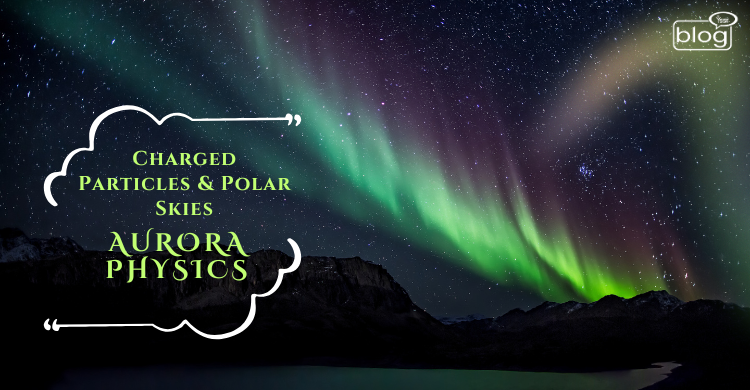“Beneath the stars, the heavens ignite,
Charged particles dance in the polar night.
Green, red, and purple in waves unfurl,
A cosmic ballet on the edge of the world.”
These words truly decode the breathtaking display of Auroras, commonly known as Northern or Southern lights.
The most brilliant and very captivating light phenomenon in the polar regions of Earth, painting the night skies in shades of green, red, purple, and blue, is the Aurora display. Still, behind such ethereal beauties, a fascinating interplay has to be unfolded between charged particles, magnetic fields, and atmospheric physics.
Spark of Charged Particles
The Aurora starts at our star, the Sun, which is always emitting a stream of charged particles—electrons and protons—similar to the solar wind, with a speed of 300-800 kilometers per second. As in the cases of solar storms and especially at coronal mass ejection events, these particles can achieve high speed and be thrown toward Earth. It is the Earth’s magnetic field, much like a shield, that keeps those particles off, channeling them toward the poles.
The Physics Behind the Glow
Charged particles, once released from the sun and reaching the earth’s upper atmosphere, transfer energy to the atoms and molecules of those gases and excite them. Atoms immediately lose this extra energy by releasing light that appears as glowing patterns in the sky and is called auroras.
The color of the aurora depends on the type of excited gas and the collision height.
Oxygen: A green or red light is emitted. The green is usually emitted at the lower altitudes—around 100 km—and the red at higher altitudes—greater than 200 km.
Nitrogen: If the nitrogen molecules receive an electron after being ionized, they can emit blue or purple; otherwise, they can emit red after going to a ground state from an excited state.
Dancing Lights & Magnetic Field
These curtains, arcs, and rippling waves are the sometimes-shimmering display of an aurora via Earth’s magnetic field. The magnetosphere guides the solar wind into oval-shaped regions around the poles, called auroral ovals, where the charged particles interact with the magnetic field of Earth. Such interactions yield the dynamic, dancing-like look of an aurora, with even the sky seemingly alive. Each variation informs about different processes going on inside Earth’s magnetosphere.
Magic to See
Those anxious to see an aurora will travel to countries around both the Arctic and Antarctic Circles: Norway, Finland, Canada, and even Antarctica. Dark and clear skies with high solar activity are the best times for viewing this natural wonder. With the help of satellites and ground-based observatories watching the Sun to predict auroras, in recent years, aurora chasers can schedule trips during times when views are most likely to be successful.
The Continuing Enigma
After decades of study, the aurora still holds secrets. Recent research, using satellites such as THEMIS-Time History of Events and Macroscale Interactions during Substorms-uncovered the origins of some of the auroral displays: a result of “magnetic reconnection,” or the sudden snapping and rejoining of magnetic field lines. Evidence that the lights are not just an earthly phenomenon but part of a greater cosmic tale.
Whether seeing the Aurora Borealis or Aurora Australis, physics in action reminds us of our connection to the sun and the dynamics of our planet. The science behind these lights adds another layer to their beauty. Cherish the auroras for a dream, and may they lead you further into space’s mysteries!
To read more blogs like this, click here.
Writer
Tanmira Takwa
Intern, Content Writing Department
YSSE

